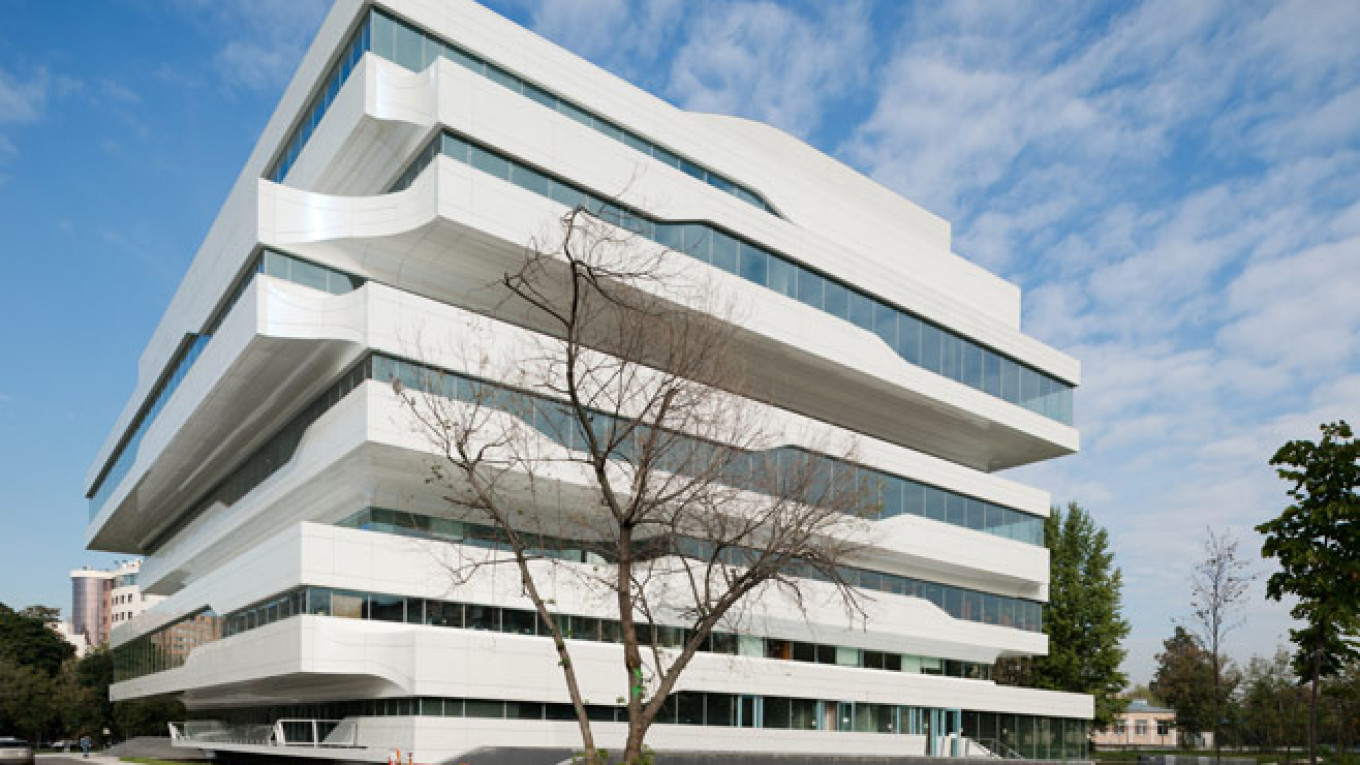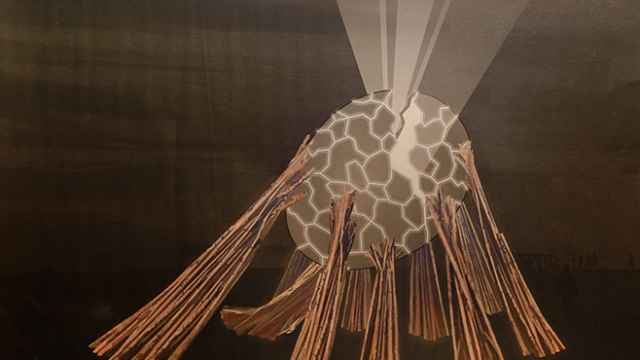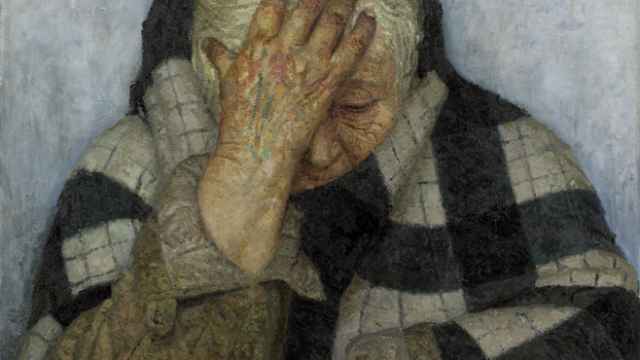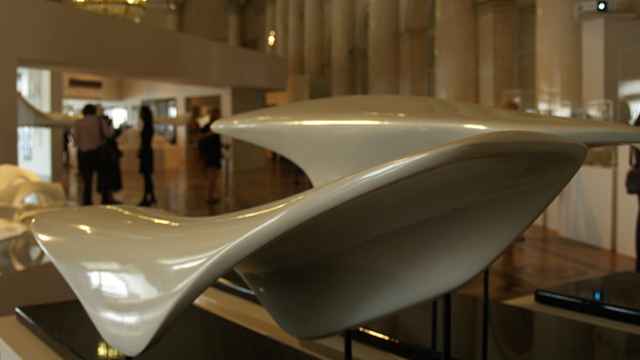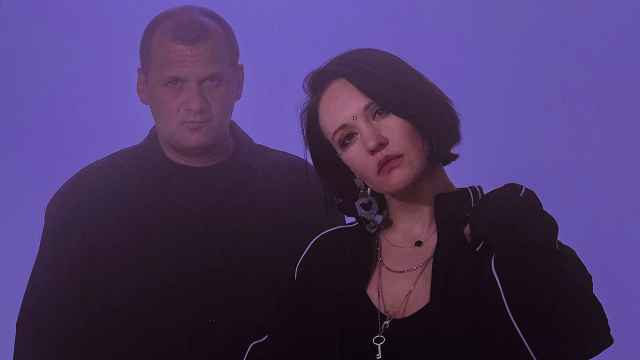This article was originally published on September 28, 2015.
Visionary architect Zaha Hadid has made her Russian debut with the construction of a stunning avant-garde office complex in Moscow.
Known as Dominion Tower, Hadid's rectangular design has been completed on Sharikopodshipnikovaya Ulitsa in southeast Moscow after a 10-year joint-construction effort by Zaha Hadid Architects and Russia's AB Elis.
Delayed by the 2008 economic crisis, the main construction work only began in 2012. The total budget for the building was 2.3 billion rubles ($35 million), making it one of most expensive properties per square meter in the capital.
Russian Influence
The building's design was inspired by Russian avant-garde styles from the 1920s, and features seven rectilinear stories, each staggered and cantilevered one over the other. The glazed facades and ribbon windows, frequently used by Hadid in earlier projects, give the structure lightness and volume.
"The Dominion Tower is a kind of critique of mass architecture, where each floor is the same as the other," said Christos Passas, the project head and associate director of Zaha Hadid Architects.
"We have tried to break this trend toward standardization, putting into the building's exterior something more challenging and chaotic. In this case, the selected shape helps to hold a dialogue with the environment."
The office building stands in a mostly residential area of Moscow, surrounded by long rectangular five-story houses built at the end of the last century and several newly constructed apartment blocks.
"It doesn't have a smooth facade, which would transform the building into a box. Instead it presents several spaces that convey the idea of diversity. It is not a single object, but several objects," said Passas.
Talking about the purpose of the building, Zaha Hadid Architects director Patrik Schumacher told reporters at the opening on Friday that "uplifting work" needs to be done not only in special places like museums and opera houses but with the "generic components with our everyday life."
The interior — dramatically different from the exterior — features a black and white atrium lit from above and criss-crossed by flights of stairs. It is a scene of spacial liberation and effortless dynamism that almost creates a "feeling of flight," according to Passas.
"As human beings we need to reach a certain level of simplicity," he said, talking about the project on Friday. "Simplicity is actually a product of complexity and not the other way around."
Form and Function
The general director of the client company Dominion M, Vladimir Melnik, said that his main goal was to create a structure that will not become outdated in 50 years.
The building is seen by many as a site that would attract tourists and lovers of contemporary architecture. However, the issue of public access for those who want to enjoy the interior appears to be unresolved at present. Melnik expressed hope that in the future everyone who wants to admire the interior will have access to the office center, which now has a typical Moscow business security system in place.
Although some spaces on the upper floors have not yet been completed, according to the owners, 40 percent of the building's space has already been rented. The architects are also still working on a special project on the top floor — an art installation within the building that would be finished before New Year's and Christmas celebrations.
"The purpose of it is to give an end to the building — an epilogue of the experience, if you like," Passas said.
Moscow's 'Hadid'
The world of the Iraqi-born, London-based Hadid has been said to stand "at the water's edge" of sculpture and architecture. Her accomplishments have been appreciated: She is the only woman to have received the Pritzker Architecture Prize as well as a gold medal recognizing lifetime achievement from the Royal Institute of British Architects (RIBA).
A student of the prominent Dutch architect Rem Koolhaas, Hadid has often spoken of how she was inspired by the Russian avant-garde. Following her studies, she started work with Koolhaas and Elia Zenghelis at the Office for Metropolitan Architecture (OMA) in Rotterdam. In 1979 she established her own firm in London which has since completed over 900 projects all over the world.
Though her company employs more than 400 specialists, all the projects completed by her firm retain Hadid's style: geometrical, neo-futuristic, curvy structures with multiple points of perspective.
Among her best-known civic buildings is the London Aquatics Centre, built for the 2012 Olympic Games, the Heydar Aliyev Cultural Center in Baku and Rome's MAXXI contemporary art museum.
British architect and one of the founding members of Archigram, the avant-garde futurist architecture group of the 1960s, Sir Peter Cook has described her work as "full of form, style and unstoppable mannerism."
Commenting on Hadid's RIBA gold medal, he said: "Surely her work is special. For three decades now, she has ventured where few would dare. If Paul Klee took a line for a walk, then Zaha took the surfaces that were driven by that line out for a virtual dance and then deftly folded them over and then took them out for a journey into space. In her earlier, 'spiky' period there was already a sense of vigor that she shared with her admired Russian Suprematists and Constructivists — attempting with them to capture that elusive dynamic of movement at the end of the machine age."
Contact the author at artsreporter@imedia.ru
A Message from The Moscow Times:
Dear readers,
We are facing unprecedented challenges. Russia's Prosecutor General's Office has designated The Moscow Times as an "undesirable" organization, criminalizing our work and putting our staff at risk of prosecution. This follows our earlier unjust labeling as a "foreign agent."
These actions are direct attempts to silence independent journalism in Russia. The authorities claim our work "discredits the decisions of the Russian leadership." We see things differently: we strive to provide accurate, unbiased reporting on Russia.
We, the journalists of The Moscow Times, refuse to be silenced. But to continue our work, we need your help.
Your support, no matter how small, makes a world of difference. If you can, please support us monthly starting from just $2. It's quick to set up, and every contribution makes a significant impact.
By supporting The Moscow Times, you're defending open, independent journalism in the face of repression. Thank you for standing with us.
Remind me later.


